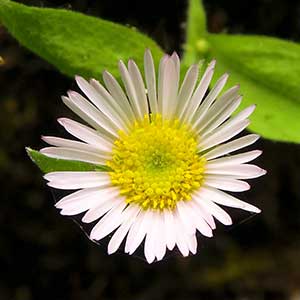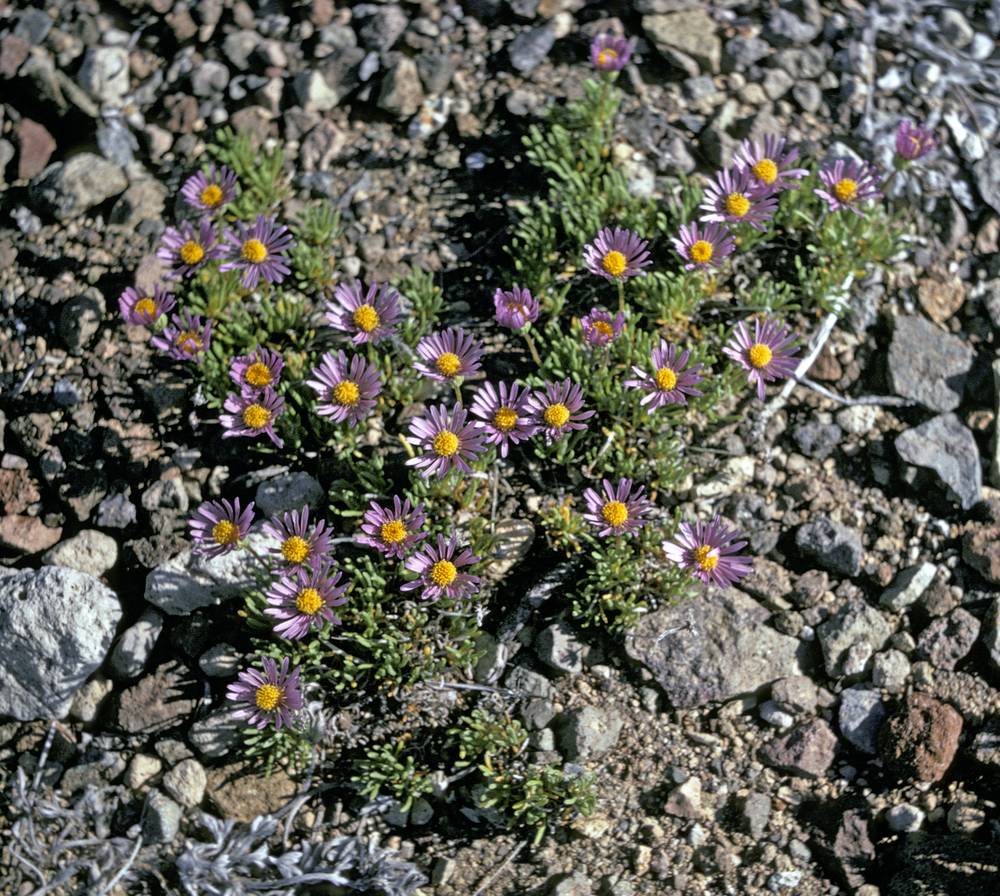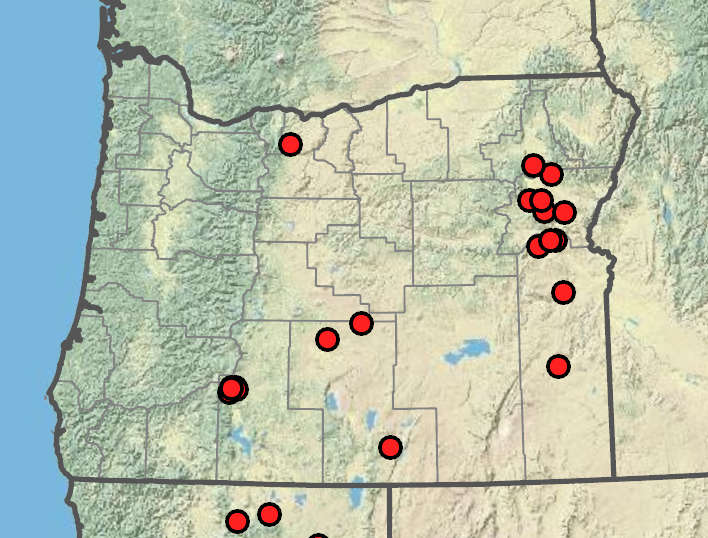Erigeron oreganus
Erigeron elegantulus
Gorge daisy, gorge fleabane, Oregon fleabane
dwarf blue fleabane, volcanic fleabane
decumbent to erect; hirsute with unequal hairs, sparsely glandular.
erect to basally ascending, sparsely to moderately strigose, eglandular.
persistent, obovate, 15–90 × 5–20 mm;
margins coarsely serrate to shallowly lobulate;
surfaces sparsely to moderately hirsute to strigose.
persistent, linear to filiform, 20–50 × 0.5–1 mm, white, bases sheathing;
margins entire;
tips round to acute or acuminate;
surfaces sparsely to moderately strigose.
obovate to elliptic; little or not reduced distally;
surfaces sparsely to moderately hirsute.
abruptly reduced and usually restricted to basal ? of stem, bases sheathing.
4–7 × 9–15 mm.
3–5 × 8–11 mm.
30–60, pink to purple;
rays 4–5 × 0.5–1 mm.
15–30, lavender to purple;
rays 3–8 × 0.7–1.3 mm.
corollas 3–5 mm.
corollas 2.5–3.5 mm.
in 2–3 series, pale green with dark green medial stripe;
surfaces remotely hirsute, strongly stipitate-glandular.
in 3–4 unequal series;
surfaces sparsely strigose, eglandular.
2–3 mm, moderately strigose;
inner pappi of several unbarbed to weakly barbellate twisted bristles.
1–2 mm, nearly glabrous to sparsely strigose;
inner pappi of numerous barbellate bristles.
1–4, radiate.
1, radiate.
=27.
Erigeron oreganus
Erigeron elegantulus
Shady cliffs, rocky slopes, crevices. Flowering May–Aug. 100–400 m. Casc. WA. Native.
This uncommon species is found only in the Columbia River Gorge.
Rocky areas, sagebrush, coniferous forests. Flowering Jun–Aug. 700–2500 m. BR, BW, Casc, Owy. CA. Native.
James Riser, Stephen Meyers
James Riser, Stephen Meyers





